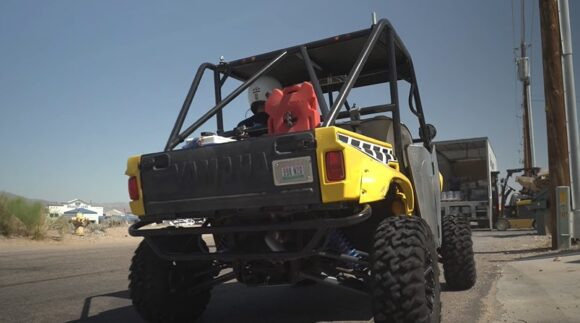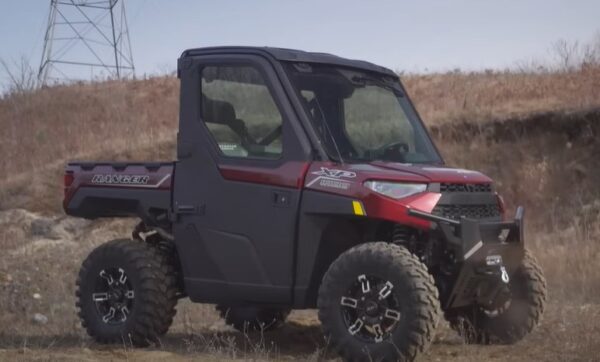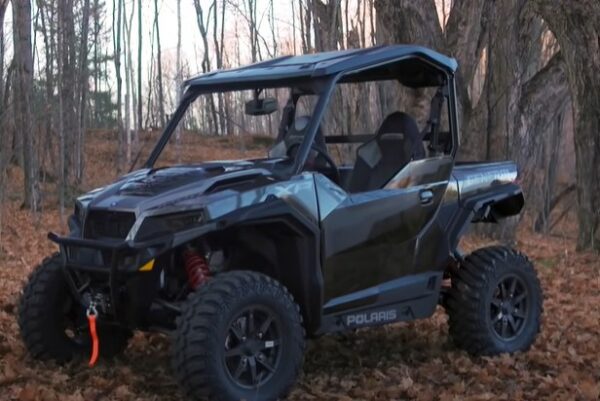If you own a Yamaha Rhino 660, you know it’s an amazing all-terrain vehicle capable of taking on any terrain.
But like any machine, there are common problems that can occur with the Rhino 660.
In this guide, we will discuss some of the most common Yamaha Rhino 660 problems and provide fixes.
Yamaha Rhino 660 Problems


1. Electrical Issues
Electrical issues with the Yamaha Rhino 660 are a common occurrence and can cause a variety of problems.
The most common electrical issue is a faulty wiring harness, which can lead to short circuits and melted components.
Poor connections in the ignition system can also lead to inconsistent starting or no start at all.
Another problem that is sometimes experienced with the Rhino 660 is an overly sensitive neutral switch which will not allow the engine to start in gear.
Fix
While these issues may sound intimidating, they can often be solved by replacing worn or damaged electrical components, cleaning corroded terminals, and checking for adequate grounding of all electrical connections.
2. Carburetor Issues
The Yamaha Rhino 660 is a powerful off-roading machine, but it can also be prone to carburetor issues.
The carburetor is responsible for mixing air and fuel in the correct proportions to create the combustion needed to power the engine.
If there are problems with the carburetor, such as an incorrect mixture of air and fuel or clogged jets, then it can lead to poor performance, poor fuel economy, or even engine stalling.
Fix
In order to resolve these issues, it is important to make sure that the carburetor is properly adjusted and maintained.
This involves making sure that all components are clean and free from debris, replacing worn or damaged parts, and making any necessary adjustments using specialized tools.
Besides, the use of high-quality fuel will help ensure that the air/fuel mixture remains optimal for proper engine operation.
3. Excessive Vibration
Excessive vibration is a common problem with the Yamaha Rhino 660 and can be caused by multiple factors.
The most likely culprit is an unbalanced tire, which causes increased stress on the vehicle’s suspension system.
Moreover, worn or loose parts in the drivetrain or axle can also cause excessive vibration.
Fix
In order to address this issue, it is important to check all of these components for signs of wear or damage and replace any parts that are worn out or damaged.
It is also important to make sure that the tires are properly balanced and inflated for optimal performance.
Additionally, regular maintenance and tune-ups should be performed to ensure that all components of the vehicle continue to operate at peak efficiency.
4. Oil Leaks
Oil leaks in Yamaha Rhinos can be caused by various problems, including loose oil drain plugs, worn gaskets, faulty or cracked oil pan seals, and improper oil filter installation.
Fix
To prevent oil leaks from occurring, it is important to regularly check the drain plug for tightness, inspect the gaskets and seals for wear or damage, and install the oil filter properly with a new O-ring or gasket.
If any of these components are found to be faulty or damaged, they should be replaced in order to prevent a potential oil leak.
5. Poor Fuel Economy
Poor fuel economy is a common issue for Yamaha Rhino 660 owners.
The Rhino is notorious for guzzling up more fuel than its competitors. This can be attributed to the engine design that powers the Rhino, as well as its weight and size.
Fix
To improve the fuel economy of your Rhino, you can upgrade the air intake, exhaust, and carburetor systems.
You should also check your spark plugs and other engine components for wear, as this can cause the engine to run less efficiently.
Finally, make sure you’re using the right grade of oil in your engine and that it’s changed regularly according to manufacturer specifications.
6. Steering Problems
The Yamaha Rhino 660 is known to have steering problems caused by the overheating of the steering hose.
This can be due to the fact that the Rhino was not designed for high-speed off-roading, and thus when pushed beyond its limits it can cause increased strain on the hydraulic components.
Fix
A possible solution to this problem is to upgrade the power steering hose with a better quality, more durable hose.
Additionally, ensuring regular maintenance of all parts related to the power steering system will help in preventing damage and ensure it operates at peak performance.
7. Brake Issues
Brake issues are a common problem for Yamaha Rhino 660 owners, with the majority of complaints stemming from poor performance.
The brakes on the Yamaha Rhino 660 can be difficult to adjust, leading to frequent brake fade or uneven braking.
It is important to properly adjust the brakes to remedy these issues for optimal performance.
Fix
First, inspect the brake pads and rotors for wear and tear. If they appear worn out, replace them with new components.
Also, ensure the calipers are aligned correctly and lubricate all moving parts as needed.
Finally, adjust the brake pedal travel and make sure that all components are in good condition before attempting a test drive.
Be sure to purchase only genuine OEM parts to ensure compatibility and reliability.
Pros and Cons
Pros:
- Durability and Reliability: The Yamaha Rhino 660 is a robust and durable machine.
- Versatility: The Rhino 660 is both a workhorse and a recreational vehicle. It’s suited for tasks on a farm or job site and is fun to ride on trails.
- Engine Performance: Its 660cc liquid-cooled engine provides decent power and torque for various terrains and tasks.
- Storage Space: The Rhino 660 offers a sizeable rear cargo bed, making it suitable for hauling tools, gear, and other items.
- Comfortable Ride: Its independent suspension, both front, and rear, provides a comfortable ride, soaking up bumps and ruts.
Cons:
- Lack of Modern Features: Compared to newer side-by-side vehicles, the Rhino 660 might lack some of the advanced features and technology available in the latest models.
- Noise Levels: Some users have reported the Rhino 660 to be a bit noisy, particularly at higher speeds.
- Transmission Issues: Some owners have encountered issues with the transmission, which sometimes required costly repairs.
- Limited Speed: The Rhino 660 is not built for high-speed performance. If one is looking for a fast side-by-side, there are better options on the market.
Technical Specifications of Yamaha Rhino 660
| Specification | Detail |
|---|---|
| Model Year | 2004-2007 (Approximately) |
| Engine | 660cc, Liquid-/Oil-cooled, 4-stroke, SOHC |
| Bore x Stroke | 100.0mm x 84.0mm |
| Compression Ratio | 9.1:1 |
| Fuel Delivery | Carburetor |
| Ignition | DC-CDI |
| Starting System | Electric |
| Transmission | Ultramatic V-belt with all-wheel engine braking; L/H/N/R |
| Drive Train | Yamaha On-Command; 3-way locking differential; 2WD, 4WD, locked 4WD |
| Suspension / Front | Independent double wishbone, 7.3 in. travel |
| Suspension / Rear | Independent double wishbone, 7.3 in. travel |
| Brakes / Front | Dual hydraulic disc |
| Brakes / Rear | Dual hydraulic disc |
| Tires / Front | 25 x 8-12 |
| Tires / Rear | 25 x 10-12 |
| L x W x H | Approximately 113.6 x 54.5 x 73 in. |
| Wheelbase | 75.2 in. |
| Turning Radius | 153.5 in. |
| Ground Clearance | 12.1 in. at lowest point |
| Fuel Capacity | 7.9 gal |
| Wet Weight | Approximately 1,049 lbs |
| Bed Capacity | 400 lbs |
| Towing Capacity | 1,212 lbs |
FAQs
Are Yamaha Rhino 660 any good?
Yes, the Yamaha Rhino 660 is considered a reliable and versatile utility side-by-side vehicle, known for its off-road capabilities and durability. Many owners appreciate its performance, build quality, and overall value.
How much is a 660 Rhino worth?
The base price of a 660 Rhino is $9,599. On average, its retail value is $4,590.
How much can a Rhino 660 tow?
The Yamaha Rhino 660 is designed to tow up to 1,212 pounds (550 kg).
How many gallons of gas does a Rhino 660 hold?
The Yamaha Rhino 660 holds approximately 7.9 gallons of gas.
What years did Yamaha make the Rhino 660?
Yamaha produced the Rhino 660 from 2004 to 2007.


I’m Harvey, and I know everything there is to know about offroad vehicles. I’ve been driving them since I was a kid, and I love nothing more than exploring the great outdoors in my Jeep, ATV or UTV. I grew up in a small town in Idaho, and that’s where my love for offroad vehicles started. There were no paved roads where I lived, so we had to drive on dirt trails to get around. And that’s when I fell in love with the thrill of being able to go anywhere I wanted, no matter how rough the terrain was. LinkedIn | Instagram



